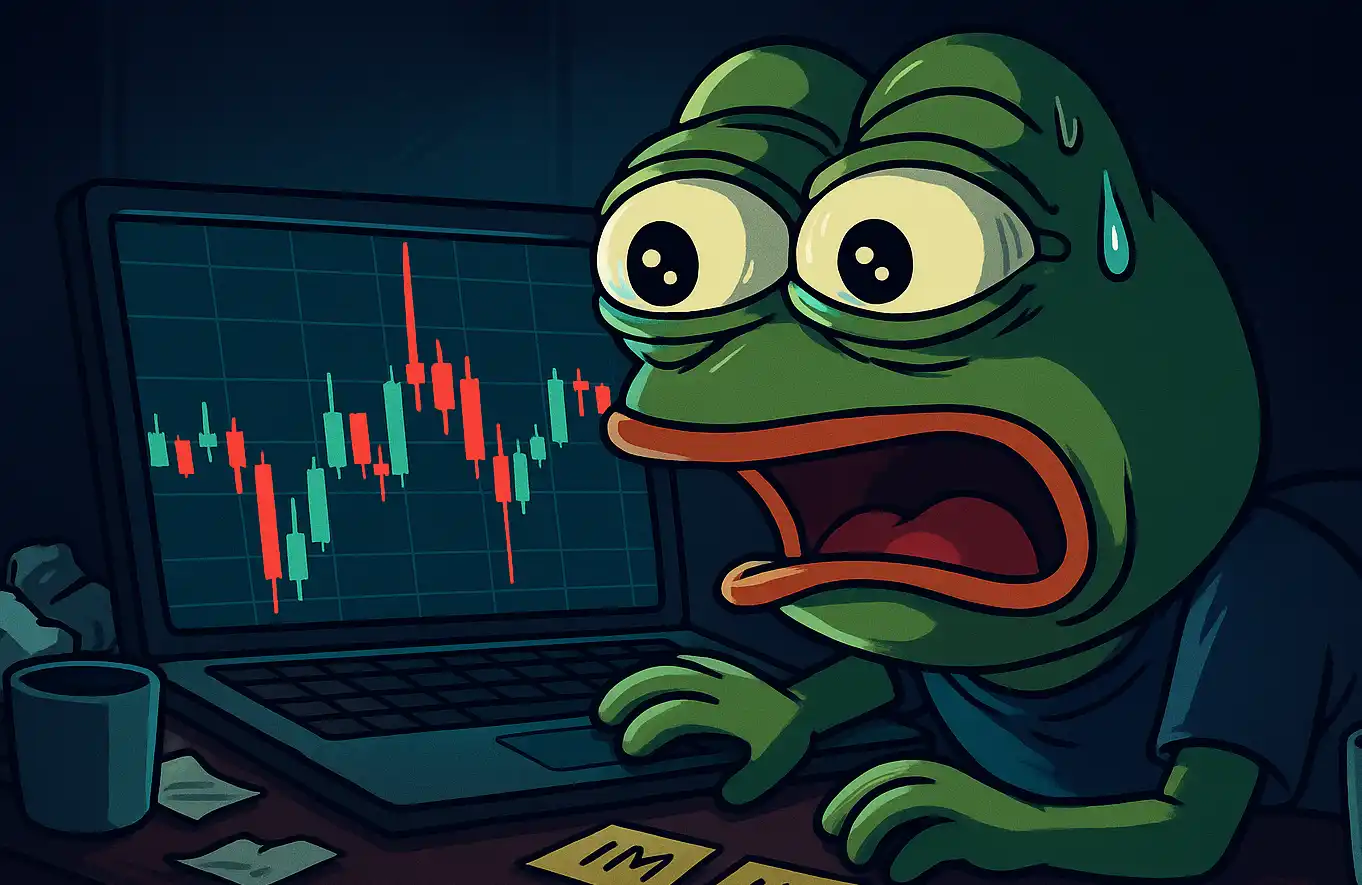Lighter's ETH and HL's XPL are both pegged tokens, how can we prevent whale manipulation and liquidation?
The story of the first episode "Nosedive" of the last season of "Black Mirror": The protagonist casually clicked "Agree," and as a result, based on that overlooked user agreement, the platform turned her mundane life into a reality show broadcast globally.
In fact, every industry has its own user agreement. Being in Perp is no different; the liquidation rules are the "user agreement" of this track.
It's not sexy or eye-catching, but it is extremely, extremely important. The same token can have different depths on each trading platform, different candlestick trends, and different liquidation mechanisms, resulting in completely different position outcomes.
Today's two Perp DEX examples are great case studies: At the same time, while Binance's pre-market contract prices did not experience the same magnitude of fluctuation, the XPL price on Hyperliquid was pulled to nearly +200% in about 5 minutes; and the eth price on Lighter spiked to $5100.
In extreme market conditions, some are delighted while others are worried.
In just one hour, several whales on Hyperliquid raised prices to clear out short positions, totaling a profit of nearly $38 to $46.1 million; among them, the widely watched address starting with 0xb9c...6801e had been holding long positions since August 24, and after the 5:35 "liquidation cascade," it profited approximately $16 million in just one minute; HLP made a net profit of about $47,000 in this event. However, the shorts were not so lucky; the XPL short at 0x64a4 was liquidated in a series within a few minutes, losing about $2 million; the short at 0xC2Cb was completely liquidated, losing about $4.59 million.
Instead of calling this a "bad actor's manipulation," it is more accurate to say that this is the result of the clearing system and market structure working together, providing a new lesson to all crypto players: always pay attention to depth and liquidation mechanisms.
How is Liquidation Generated?
At any perpetual contract platform, the first thing to understand is: Initial Margin (IM) and Maintenance Margin (MM): IM determines the maximum leverage that can be taken; MM is the liquidation line, and when the account equity (collateral plus unrealized PnL) falls below it, the system takes over the position and enters the liquidation process.
Next is to look at the price. The price that determines liquidation is not the last trade price, but the Mark Price. It is often determined by external indices, oracle feeds, and the platform's own order book, and undergoes smoothing and anti-manipulation processing; the index price is closer to a pure external weighted spot reference; the Last Price is the platform's most recent trade, easily manipulated by momentary sweep orders.
So when "Account Equity < Maintenance Margin," liquidation is triggered. However, the details of the liquidation depend on the platform's own liquidation execution mechanism.
Hyperliquid: Letting the Market Devour Liquidation
Let's first look at Hyperliquid. Hyperliquid's liquidation mechanism is as follows: when the account equity falls below the maintenance margin (MM), the system prioritizes sending the liquidation order directly to the order book to liquidate the risk in a market-driven manner.
If it is a large position (e.g., >100,000 USDC), typically around 20% will be liquidated first, then there will be a cooldown period of about 30 seconds, after which a full liquidation might occur. If the position is still not cleared, and the situation deteriorates further to a deeper threshold (e.g., equity below 2/3×MM), a back-up liquidation is triggered, taken over by the community-driven Liquidator Vault (HLP component). To ensure the "backstop ability remains," in many cases, the maintenance margin is not returned during this step.
The entire process does not incur a "liquidation fee," but in pre-market situations where external anchors are weak, and the order book depth is poor, the liquidation itself may further push the price in the same direction, causing a short-term upward spiral.
Simultaneously, Hyperliquid's mark price is determined by external CEX quotes and its own order book, and during moments of volatility, if the internal trading dominates, it can also accelerate the trigger pace. In addition, there are differences in the handling of isolated and cross positions in the backup stage: when a cross position is taken over, the entire position and margin may be transferred away together; for isolated positions, only the position and its isolated margin are affected.

So let's rewind time to the early hours of today to briefly review Hyperliquid's XPL event. Starting at 5:35, Hyperliquid's XPL buy-side rapidly lifted the trading range through an "order book sweeping" approach, with the mark price being dominated by the platform's internal matching, and the upward movement far exceeding normal periods.
For heavily short-crowded positions, this upward movement caused the account equity/maintenance margin ratio to be instantly lowered: when equity falls below MM, the system takes over the position according to the established process. Next, the system will buy from the order book to close the shorts (those with large volume may first be partially cleared and enter a cooldown period), and these closing short orders themselves will continue to drive up the price and mark price, triggering more shorts to fall below the MM. In a matter of seconds to tens of seconds, the positive feedback loop of "sweep the book - trigger liquidation - liquidate then sweep the book again" is formed – and this is also the mechanistic explanation for the price approaching +200% in a matter of minutes.
If the imbalance still cannot be cleared on the books and the equity of the liquidated account further drops to a deeper threshold (e.g., 2/3×MM), the backstop liquidation mechanism will kick in, continuing to absorb the buy orders, ensuring that the risk is "eaten up" within the system.
Once the order book depth is restored, and the liquidation queue is completed, addresses that were liquidated involuntarily start to take profits. The price then quickly plummets from its peak, resembling a rollercoaster ride — this is the whole process of "Hyperliquid's XPL surging by nearly +200% in a few minutes → cascading short liquidations → rapid decline."
This is actually the inevitable result of pre-market liquidity depth, position congestion, and the liquidation mechanism, all coupled together.
Will Lighter Really Get Liquidated Earlier?
Now, let's take a look at Lighter. This morning, the price of ETH on Lighter briefly spiked to $5,100, attracting considerable attention as well. Lighter, the second most actively traded perpetual dex highly regarded by the foreign CT community, has also sparked numerous discussions with its price swings.
Lighter has three thresholds: IM (Initial Margin)> MM (Maintenance Margin)> CO (Liquidation Margin). Breaking below IM triggers a "pre-liquidation" stage, where positions can only be reduced, not added to; falling below MM leads to a "partial liquidation" stage, where the system executes IOC limit orders based on a pre-calculated "Zero Price" to deleverage your position. The design of the Zero Price ensures that even if you transact at that price, your account health does not deteriorate further; if you get a better price, the system deducts a liquidation fee of up to 1% into the LLP (Insurance Fund). If the equity falls below CO, a "full liquidation" is triggered, clearing the entire position and transferring the remaining collateral to the LLP. If the LLP funds are insufficient to cover the losses, the ADL (Auto-Deleveraging) mechanism is activated, partially offsetting leveraged positions on the opposing side with high leverage or large unrealized profits at their respective zero prices, aiming to achieve deleveraging at the system level without adversely affecting innocent users. Overall, Lighter sacrifices some "liquidation speed" in exchange for a more controlled impact on account health and book.

So does this mean that Lighter has a much higher liquidation price compared to other dexes and will be liquidated earlier?
A more accurate answer is: yes and no.
In simpler terms, Lighter's "earlier liquidation" involves incremental "deleveraging to salvage." It leverages "Zero Price" IOC limit orders to deleverage, aiming to maintain account health; many times, it aims to bring the position to safety rather than "liquidate" you. Full liquidation only occurs when it deteriorates to CO.
So, we can't simply say that "Lighter is more prone to liquidation," but rather settle and deleverage more gently, "spread out" the risk, reduce the price impact of mass liquidation, and charge ≤1% liquidation fee to the Insurance Fund for trades executed at a price better than the "zero price."
Interestingly, in the early days, Lighter's scoring weight placed a significant emphasis on the liquidation amount. According to an analysis by Lighter community member 0xTria, at that time, the initial liquidation of an account was "every $1 liquidated ≈ 1 point," while the community valued these points at $15-30, directly incentivizing many users to exploit the liquidation-for-points mechanism through sub-accounts and new accounts. However, in subsequent versions released weeks later, this weight was significantly reduced.

How to Avoid Manipulation
In the crypto world, it's a dog-eat-dog environment. For the average person, the goal is not to seek high returns but rather to minimize the chances of being liquidated or controlled by whales. So how can one minimize these risks as much as possible?
Check the Chip Structure
The data compiled by ASXN's data platform provides valuable insights, such as various Hyperliquid metrics:
For example, the OI/Market Cap ratio data. Open Interest (OI) divided by Market Cap, expressed as a percentage. A higher ratio indicates that the derivative position holds a larger share of the token's volume and is more susceptible to price manipulation. A classic example is when the position inherited from the HLP liquidation fund once exceeded 40% of JELLY's circulating supply, causing the token price to collapse like a line of dominoes.


Likewise, DEX liquidity tables allow for a quick assessment of on-chain liquidity for a token and the risk of manipulation, enabling the identification of hoarding signs by holders.
The funding rate and its comparison with major centralized exchanges help us discover assets that may be manipulated. When large positions enter thin open interest contracts, the funding rate may deviate abnormally compared to other exchanges.
Measure Depth
How to Measure Depth? You can test how much money it takes to push the price up or down by 2%: How much buy volume is needed to push the price up by 2%? How much sell volume is needed to push the price down by 2%?
This is the real order book thickness of the best buy/sell side, which is also the attack cost for whales. Assets with a large depth difference = can easily manipulate the price with lower costs, low manipulation threshold, and naturally higher risk.

This also means that we should trade on the platform with the best liquidity and trade the most liquid tokens.

Take the most core BTC/USDT pair as an example: within a 0.01% price difference range, the depths of several mainstream perpetual DEXs are: edgeX $6M, hyperliquid $5M, Aster $4M, Lighter $1M.
This also means that the liquidity of other altcoins will be far below this level of depth, increasing the risk of manipulation significantly, not to mention pre-trade tokens like XPL.
Be Sure to Read the Liquidation Protocol
People who can clearly see the rules usually find it easier to see the risks they can take.
Before starting formal trading, be sure to read all liquidation rules: How is the mark price calculated? Does the platform mainly rely on an external index price, or does its own order book carry significant weight? Particularly for pre-market/unpopular pairs, be wary of whether the Mark can easily be manipulated by internal trading. It is recommended to closely monitor the Mark/Index/Last numbers during normal and abnormal periods to see if there is significant deviation.
Does hierarchical margin exist? If so, the larger the position, the higher the maintenance margin, meaning the liquidation price is moved up. Is the liquidation method a market sweep of the order book or gradual opening of positions? What is the liquidation ratio? What are the trigger conditions for a forced liquidation? Are there liquidation fees? Where do the liquidation fees go: team revenue, vault, or foundation buyback?
Moreover, even if two trading platforms hedge for arbitrage, without considering depth and liquidation mechanisms, there is still a very high risk. Cross-platform hedging ≠ on-platform margin; these two things should be viewed separately. Use stop-loss if possible, go isolated if available, isolated will only affect that position and its collateral, go all-in only with the liquidity you can bear.
One final thing to note is that the risk of smart contract exploits is larger than most people realize.
Welcome to join the official BlockBeats community:
Telegram Subscription Group: https://t.me/theblockbeats
Telegram Discussion Group: https://t.me/BlockBeats_App
Official Twitter Account: https://twitter.com/BlockBeatsAsia
 Forum
Forum

 Finance
Finance
 Specials
Specials
 On-chain Eco
On-chain Eco
 Entry
Entry
 Podcasts
Podcasts
 Activities
Activities
 OPRR
OPRR










